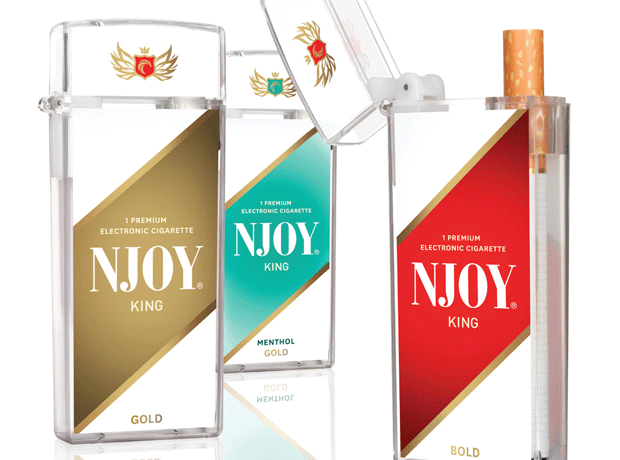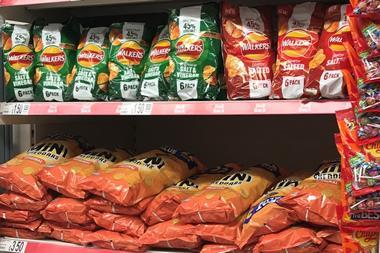“We are digital to their analogue,” asserts Bo Ekberg, vice president international of NJOY.
For those who don’t know, NJOY owns the biggest-selling electronic cigarette brand in the US and has now set its sights on the UK. However, not simply content with carving out a leading share of the growing e-cig market over here, like the 49.7% share it has Stateside - NJOY is out to make traditional cigarettes obsolete.
“The cigarette has met its match,” he added (The Grocer, 13 April).
Big words certainly, but there are plenty of respected industry watchers who agree it can be done. A note from US analysts Wells Fargo late last year suggested e-cigarettes had the potential to overtake traditional tobacco within the next 10 years - especially if they could closely replicate the traditional smoking experience.
This is what NJOY in particular is trying to achieve, from its packaging, which echoes the traditional look of a cigarette brand to the way it opens like a Zippo lighter, to the product itself, which is almost identical in size and weight to a normal cigarette. It also boasts a flavour system developed by a former technician at Philip Morris parent Altria.
E-cigs at a glance
- UK retail sales of e-cigs last year were £23.9m, however the total market including online sales is estimated at £150m.
- The EU Tobacco Control directive says all e-cigs containing more than 4mg of nicotine should be regulated as medicines - the average nicotine content is 18mg.
- The EU has set a deadline of summer 2104 to decide how it will regulate e-ecigs.
- E-cig makers argue their products should fall under existing consumer protection regulations.
A more conservative view of the market’s potential came from Goldman Sachs, which said they may claim a 10% share in the next few years. But even Goldmans admitted that if all factors worked in their favour, e-cigs could enjoy as much as 35% share.
That’s a big if, however: for there are dark clouds gathering in the shape of the EU’s revised Tobacco Control Directive, which is provisionally due to come into force in summer 2014.
There have been some misleading headlines suggesting that directive ‘TCD2’ would ban e-cigs. This is not strictly accurate. But NJOY executive vice president Roy Anise admits the directive in its current form “is not particularly friendly to e-cigarettes”.
Regulated as NRT
The directive proposes that e-cigs be regulated as nicotine replacement therapies (NRT) in a similar way to gums and patches. All products with a nicotine content of more than 4mg would have to be licensed as medicine by either European or national authorities such as the Medical and Healthcare Products Regulatory Agency.
According to Lib Dem MEP Rebecca Taylor, who sits on the European Parliament’s environment, Public Health & Food Safety committee, which is currently examining the directive, the average nicotine content for an e-cig is 18mg - so they are clearly in the firing line to be bracketed as such.
The Grocer understands a minority of e-cig makers have already applied to MHRA for a licence because they believe it will be needed eventually. The majority, however, are playing a waiting game because not only is gaining such a licence extremely expensive, it can take years to gain approval.
While the current proposals would certainly burst the e-cig bubble, argues Vapouriz MD Brett Horth, some form of regulation is important. “There needs to be regulation if we want to get rid of the cowboys,” he says. “But we believe e-cigarettes are a consumer product and should be guided by current consumer protection laws and overseen by Trading Standards authorities.”
Ekberg is unwilling to speculate on the outcome of the deliberations in Europe, but says there have been more positive noises from Brussels in the last few weeks. Rapporteur and Labour MEP Linda McAvan has been tasked with pulling together more information before reporting back to the parliament later this year.
Anise also points to a similar debate in America, which came to a head in 2010 when his company eventually defeated the USFDA in court, after it was ruled the latter had no authority over e-cigs. It does now look as if a lighter-touch regulatory approach is gaining traction in the EU, partly driven by support from anti-smoking groups such as ASH, which is keen that governments don’t make it harder for smokers to find alternatives to tobacco.
Taylor seems to favour a less draconian approach. “I am not yet convinced e-cigarettes would be best regulated as medicines,” says the MEP. “But they do need a robust regulatory regime that will keep good quality products easily available … without making them attractive to new non-smoker users, especially young people.”
‘May damage your health’
She suggests instead using health warnings on pack, with words such as ‘May damage your health’ - as the long-term health implications are not yet known, and that EU-wide standards on the quality and safety of devices and liquids, and restrictions on marketing, ensure that advertising do not normalise smoking or broaden the appeal of e-cigs to non-smokers.
This week 13 separate e-cigarette makers were exhibiting at the National Convenience Show in Birmingham, all looking to secure listings with retailers, as the category shifts from being largely internet-based to a more regulated retail category.
There is sure to be an element of self-regulation at this stage - major retailers will be keen to work only with the most reputable of operators, and as certain brands gain greater recognition, others will surely fall by the wayside - as has been the case in other recent boom categories such as energy drinks.
But for the long-term success of this category, decisions taken in Europe over the next 12 months will be critical in deciding whether the market truly catches fire or e-cig suppliers’ dreams go up in smoke.



![XOXO-Product-Shot[ALL FLAVOUR]-Sky-1920x1080](https://dmrqkbkq8el9i.cloudfront.net/Pictures/274x183/4/9/2/355492_xoxoproductshotallflavoursky1920x1080_806584_crop.jpg)















No comments yet